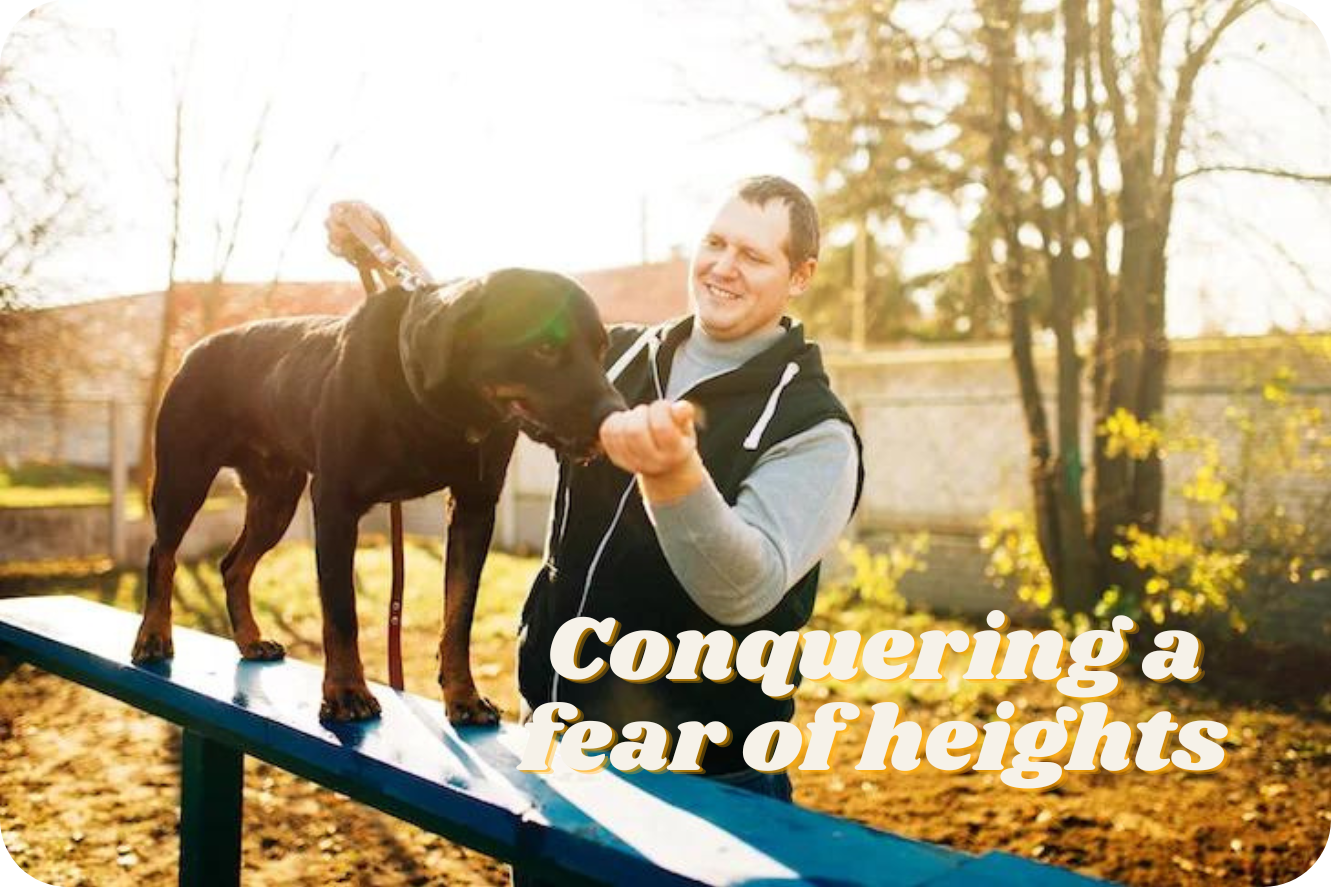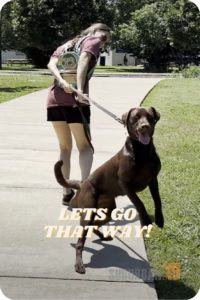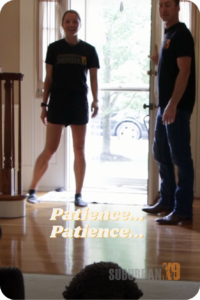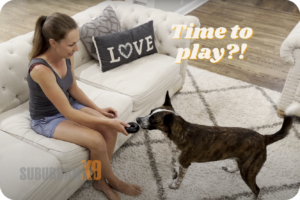Classical conditioning is a powerful training process to teach your dog desirable behavior. However, classical conditioning may work against you and lead to many bad behaviors and habits.
In this video, we often discuss that classical conditioning can cause undesirable behaviors. Examples are the doorbell ringing, going for car rides, putting the leash and collar on, getting them out of their crate, etc. We also discuss how you can use classical conditioning to your advantage to prevent or fix specific issues.
What is dog classical conditioning?
Dog classical conditioning is a fundamental concept in the world of dog training. This method involves associating a neutral stimulus with a specific response to shape behavior. Through repetition and consistent pairing, dogs learn to anticipate outcomes based on the stimulus presented, ultimately leading to conditioned responses. This technique lays the groundwork for building desired behaviors and responses in dogs.
Can classical conditioning in dogs be used to train them?
Classical conditioning is indeed a powerful tool in training dogs. Trainers can establish positive reactions to various cues by creating associations between stimuli and behaviors.
The first step to using classical conditioning to your advantage is understanding it and identifying times that classical conditioning on your dog has already occurred. Then, you can create a plan to undo the undesirable occasions where conditioning reinforces a bad behavior. Then, you can even create a plan to use classical conditioning to develop good behavior.
However, it's important to note that while classical conditioning is effective, a comprehensive training approach often incorporates other methods to achieve well-rounded results. By leveraging the principles of classical conditioning, trainers can enhance their canine companions' learning experiences and strengthen their bond.
Dog Classical Conditioning and Operant Conditioning: What is the difference?
When training dogs, differentiating between classical and operant conditioning techniques and employing both is instrumental to success.
Dog Classical Conditioning: Associations and Stimuli
Dog Classical conditioning involves creating associations between a neutral stimulus and an unconditioned stimulus. For instance, dogs associating the sound of a bell with mealtime is a classic example. This method focuses on forming links between stimuli to elicit specific responses.
Dog Operant Conditioning: Shaping Behavior Through Consequences
In the video above, please know we are not discussing Operant Conditioning. This type of conditioning is very different and involves a series of choices on the dog's part.
Operant Conditioning is where a dog learns that specific actions can cause good or bad things to happen and then decides if they want to perform those actions. It aims to modify behavior through consequences. Good behaviors are reinforced with rewards, while punishment discourages poor behavior. This approach shapes behaviors by focusing on the outcomes of actions. Remember, classical conditioning is different and is involuntary; it is not a series of choices like Operant Conditioning.
Understanding the contrast between these two methods equips trainers with valuable tools. By utilizing classical and operant conditioning, trainers can craft comprehensive training strategies that effectively cater to dogs' learning and development needs.
Examples of Dog Classical Conditioning
Dog Classical conditioning comes up in the context of excitement. Unfortunately, it also occurs with fearful events. If your dog has a bad experience at the vet, they can quickly associate other stimuli with the vet and become scared whenever those stimuli are present. It could be a particular smell, a certain sound, or even the car ride itself.
Pavlov's Dog
The example most people have heard of is Pavlov and his bell. The bell starts as a neutral stimulus, and it means nothing. Pavlov then rings the bell and feeds the dog over and over again. Through time, the simple ringing of the bell causes the dog to salivate. This is an involuntary response, and the dog cannot control it.
Negatives
Leash and Collar
Many of our clients have spent months, if not years, accidentally teaching their dogs to get over excited on leash.
- Walks - If you grab your leash and excitedly say, "Let's go for a walk!" this creates high excitement out of the door.
- Agility - We recommend using a different leash when working your dog on an agility course. Dogs may associate the leash with the highly excited state of mind on the agility course.
Doorbell
This is one of the most common examples. That doorbell is oftentimes the herald of poor behavior. Whether your dog loves or hates people coming over.
Feeding Time
Most dogs love food, so do not add any extra excitement to mealtime! This can lead to them eating too quickly and the health issues associated.
Letting the Dog Out of the Crate
After a day at work, there is nothing you want more than to let your dog out of the crate to play and cuddle. Unfortunately, if you feed into their excitement and add your own, you can escalate this behavior to the point of separation anxiety. Try Leashing your dog first, calmly walking outside to go potty, and then coming back in for all the playtime and cuddling you want!
Relaxing on the Couch
We see many clients that have fallen into this trap. They sit on the couch to relax after a long day, but their dog has other plans. They drop a ball into the owner's hands, and by reflex, they throw it. Repeat a few times for a few days, and suddenly, it's a new habit, and your dog is jumping all over you if you aren't paying attention or are too tired that day. Practice long down stays to solve this problem.
Car Rides
Dogs can have extreme feelings about the car. If you don't take many trips in the car, and the last two or three were to the veterinarian they don't like; suddenly you may notice a distaste for car rides. Similarly, if you've been to the dog park a few times in a row, your dog may be jumping through the window at your slightest move towards your car.
Positives
Therapy and Service Dog Vests
We've seen it with many dogs we've trained. If you're observing them in the backyard playing with the family, you might never know the training and temperament they can display. The vest comes out, and suddenly, they are a dog on the job, sober and ready to provide comfort and support.
Get better in the crate
When working with dogs that can't settle down in the crate, one of the best techniques we've developed is working on a down stay in the crate. This is not a quick fix, but the dog will get better at it with consistent work. In turn, the longer a dog can hold a relaxed body position. Eventually, the mind follows suit and changes the dog's mindset inside the crate.
What is Balanced Training?
Embraced by trainers and pet owners, balanced training goes beyond methodology—it's a philosophy focusing on the well-being of dogs and handlers. In this video, explore its principles, psychology, and transformative impact on dog training.
This approach integrates positive reinforcement with corrective techniques, fostering harmony between humans and dogs. From basic obedience to complex challenges, it's remarkably effective. Discover the art of balanced training, shaping respectful relationships and addressing diverse behavior issues.
Reach out for more help with Classical Conditioning or Balanced training
If you need help, our Dog Boot Camp and In-Home dog training programs are highly customized and designed to give you and your dog the best life possible. We focus on obedience commands, leash walking, off-leash training, in-home behaviors, socializing, and many other training goals. For more information, please visit our website today!
Other Articles You May Enjoy
 |
Should I Crate Train My Puppy
Our crate training article goes over everything you need to know about crating your dog. From sizing to selecting the right crate, this article can help. |
 |
Dakota 283 G3 Kennel Review
If you are looking for something a little bit more traditional than the dog crate furniture featured in this article, check out our review of the Dakota 283 G3. |










